HOLIC
February 2023
February 2023


February 2023
February 2023

I hope you are having a great 2023! Time has passed so fast, and it’s hard to believe that this is the SIXTH edition of ScienceHolic magazine productions Thank you so much to our readers and followers for your continuing support throughout the years Can you believe that the 3rd anniversary is in one month?
I am also thrilled to introduce our webinar schedule for the year! Make sure to check out our social media for details
Early March: Engineering Webinar
Mid-April: Astronomy Webinar
Mid-June Environment Webinar
Mid-Aug Chemistry CONFERENCE
Mid-October College Application Tips with ScienceHolic Alumni
Mid-December Physics Webinar
Anyways, this could only be accomplished with our fabulous team members and directors. I am incredibly proud of our achievements throughout the years, and I can’t wait to see what we will achieve in the future. Since it is the start of the year, we are recruiting team members. If you are interested, please find details at the back of this magazine or on our social media, and we are excited to welcome you on board.
Spring is creeping up on us! Who’s ready to spend more time outside? In the meantime, please grab a cup of hot coffee (or tea) and enjoy the 2023 February edition
Welcome to a new Scienceholic! Thank you to and to our readers for ma magazine a resource for youn enthusiasts. We are thrilled with you the 2023 February Scienceholic. Get excited adventure in math and t where writers explore ma concepts, chess, and comput Following the trend of past human body and biology are the SH editions! There ar articles on disease and h Finally, we would like awareness this month wit covering environmental iss with today February International Polar Bear Da are only 25,000 polar bears wild They face climate cha due to the melting Arctic. R see how you can help with the carbon dioxide level t global warming. Enjoy!
Sincerely,
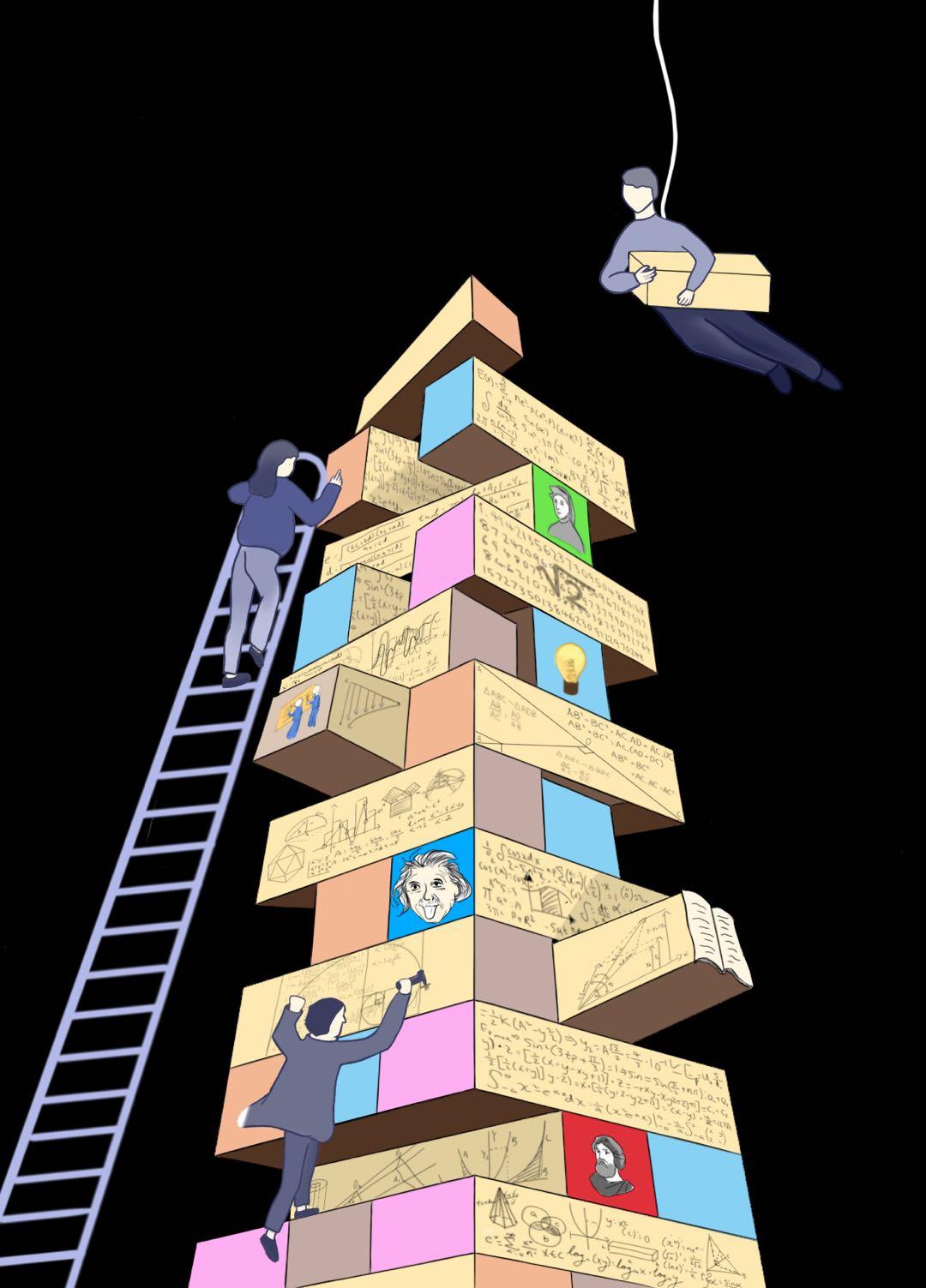

Mathematical Proofs: A Mathematician’s Greatest Desire
Brain: Our First Virus
The Game of Strategy: Chess and Its Relations to the Persuit of Knowledge
Endosymbiotic Theory: How a Little Prokaryote became a Eukaryote
The Messengers Inside Your Brain
The Mysterious Fifth Taste
The Fight Against Antibiotics
Ancient Anesthesia: Opium to Laughing Gas
Polio: A Revived Disease
What does Anthrax Do to Your Body
Stomach Cancer: Conditions, Treatment, and Solutions
Scoliosis and Its Treatment
Our Everyday Encounters with Diseases
The Effects of Slowing Ocean Currents
Another Carbon-Releasing Monster
















 Executive director
Joyce Hai
Director of Content
Ted Isidor
William Tsay
Andy Lin Writer
Hanni Yang Senior Writer
Chen Zhe Lin Writer
Jefferson Lin Writer
Winne Mok Writer
Wendy Rong Writer
Jia Hao Wu Writer
Cici Zhang Writer
Ellie Wang Senior Writer
Lucy Chen Writer
Emily Jiang Writer
Executive director
Joyce Hai
Director of Content
Ted Isidor
William Tsay
Andy Lin Writer
Hanni Yang Senior Writer
Chen Zhe Lin Writer
Jefferson Lin Writer
Winne Mok Writer
Wendy Rong Writer
Jia Hao Wu Writer
Cici Zhang Writer
Ellie Wang Senior Writer
Lucy Chen Writer
Emily Jiang Writer


















 Director of Artistic Team
Serena Yung
Serena Zou Artist
Jennifer Hu Artist
Lalita Ma Artist Susan Wu Artist
Director of Editing
Ken Saito
Director of Editing
Shirley Chen
Jasleen Matharu Editor
Emily Chen Editor
Angela pan Editor
Peggy Yang Editor
He-Hanson Xuan Editor
Yanxi Chen Editor Hwi-on Lee Editor
Senior Artist
Jade Li
Tiffany Gao Artist
Lilian Chen Artist
Acey Li Artist
Carys Chan Artist
Director of Artistic Team
Serena Yung
Serena Zou Artist
Jennifer Hu Artist
Lalita Ma Artist Susan Wu Artist
Director of Editing
Ken Saito
Director of Editing
Shirley Chen
Jasleen Matharu Editor
Emily Chen Editor
Angela pan Editor
Peggy Yang Editor
He-Hanson Xuan Editor
Yanxi Chen Editor Hwi-on Lee Editor
Senior Artist
Jade Li
Tiffany Gao Artist
Lilian Chen Artist
Acey Li Artist
Carys Chan Artist

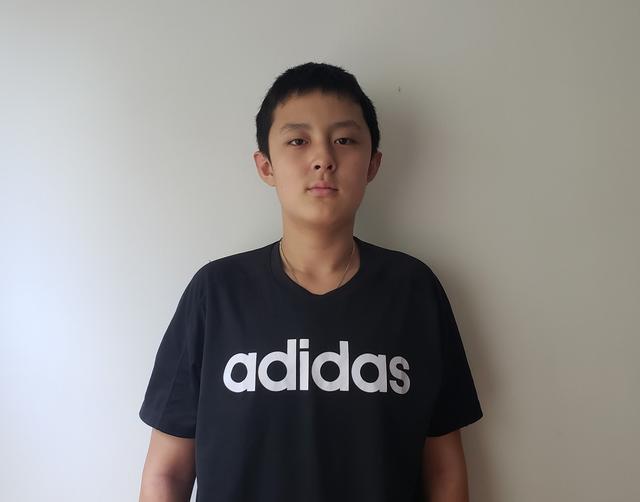






 Tommy Zhang Website Team Member
Sabrina Lee Director of Communications
Jessica Dong Director of partnership & Hr
Jenny Dun outreach Team Member
Director of Social Media
Winnie Li Director of Graphic Design & Social Media
Shazia Sultana
Shangchen Cai Member
Tommy Zhang Website Team Member
Sabrina Lee Director of Communications
Jessica Dong Director of partnership & Hr
Jenny Dun outreach Team Member
Director of Social Media
Winnie Li Director of Graphic Design & Social Media
Shazia Sultana
Shangchen Cai Member
Editors: Yanxi
 Chen
Chen
and
Jasleen MatharuArtists: Tiffany Gao and Guanxin Li
Imagine that you are taking part in a test unlike any previous one. In this test, your answers will be distributed to the current and future test takers (meaning that if you mess up, there will be a lot of angry teenagers at your door) Nevertheless, you begin your exam, and things are looking in your favor until you hit that one question you have no clue how to solve. Panic seems to knock at your door once you realize that if you get this question wrong, everyone else gets it wrong too. Speeding up the story, you overcome the question
and finish the exam, but your score turns out to be terrible, and as a result, generations of people fail the same test. Mathematicians are like artists in their lines of work, conjuring up revolutionary ideas that can affect future generations of mathematical work that stems from it However, unlike art, this property of mathematics, from building up from one idea to another, is precisely why having a solid foundation is essential, or else the entire thing will collapse. Hence, I present the concept of proofs, which can be advertised as “the wonder pill giving mathematicians a good night's sleep.”
Proofs can be defined as a series of steps written by a mathematician that demonstrates how they reached a new theorem, using previous ideas already deemed true To put it in perspective, proofs are the steel beams supporting skyscraper mathematics. So, it makes sense that mathematicians are adamant that the proofs for mathematical theorems are good. But to truly understand how proofs work, we must delve into the history behind proofs and understand how
accredited with the first proof is the Thales of Mineaus. According to the research paper, “A history of mathematical proof: Ancient Greece to the Computer Age,” by David Bramelett Ph D , Thales' proof was that the diameter of a circle cuts a circle into two equal parts The theorem seems quite bland to most people, some may even argue that a child with a ball of playdough and a ruler would have proven the same.more logical as it showed how to reach a conclusion using currently accepted truths step by step. Following the
mirroring the joy that comes from dandelions
However, Thale’s proof on diameters was Coming back to the Greeks for one last time, there is an unusual story on how the creation of a proof drove a group of



devices have proven to be an aid for mathematicians. One famous computeraided proof is the Four Colors theorem According to Wolfram, “any map in a plane can be colored using four colors in such a way that regions sharing a common boundary (other than a single point) do not share the same color.” For many years this problem ravaged the minds of mathematicians until they got a computer to do it, and unsurprisingly, it was a success.
On the other hand, induction looks at proving a given mathematical argument is true for some initial value and then proving it to be true for the cases following it For example, say we have a theorem that we want to prove. If we were to use direct proof, we would state certain definitions and already proven theorems, how they relate to the one we are trying to prove and how they justify the truth in it. Whereas a proof using inductive reasoning would consider if the theorem is true for an integer equal to 1 (if the theorem we are trying to prove involves integers) and then prove the theorem is true for any integer (k+1 for some integer k) However, a shared characteristic of all proofs is that it requires transparency, which means not leaving out the smallest of calculations and definitions, even if the reader might already know them. Try to prove something in your own life, such as the statement, “the sun shines,” which is just as easy as it seems fun

In an age in which computers are becoming so small and powerful, it is not surprising that computer-assisted proofs have come to life. For the most part, computers have been used by mathematicians for calculations of large numbers, but in recent decades, these
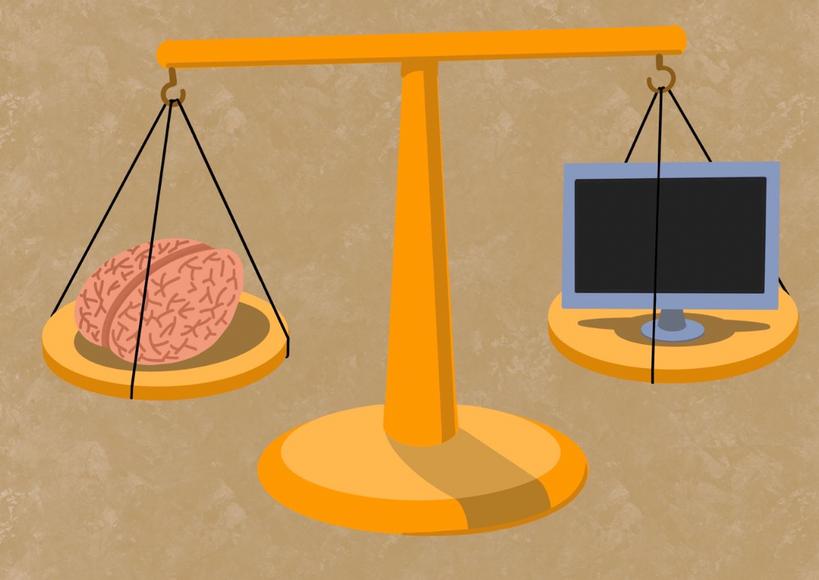
Given that a theorem was proven mainly in part by an object, you might ask, “why can’t we just have computers make our proofs?” The answer to that question lies in what makes humans unique: our imagination. The wild thoughts of a mathematician and cunningness exceed any current computer's capabilities. However, keep in mind that computer-assisted proofs are becoming more attractive with conversation (information mentioned came from the article “Mathematicians welcome computer-assisted proof in ‘grand unification theory” by Nature) that these proofs may soon lead to an upheaval in contemporary mathematics.
Mathematics, in the view of the extraordinary David Hilbert, is all but a friendly game. A game that is quite valuable in the real world, but it is a game of discovery and joy at its core, with proofs being a needed add-on to the game
Author: Tracy Ye
Editors: Hwi-On Lee and Zhengze Ye
Artist: Susan Wu
What is a computer virus? You may rightfully assume it is made maliciously since modern viruses are known for tampering with systems, destroying files, and even ransoming money, but, by definition, a computer virus, including both disruptive and harmless type, is a type of malware code that can replicate itself onto the devices and programs it infects. According to the definition, it may not surprise you to learn that the computer virus, Brain, which is considered by some to be the first computer virus due to its targeting of the popular IBM PC and MSDOS (Microsoft Disk Operating System), was harmless. In fact, its conception was anything but malicious rather it was created to punish pirates.
Brain was created in January of 1986 in Chah Miran of Lahore Pakistan The authors were two brothers Basit Farooq Alvi (17) and Amajad Farooq Alvi (24) working in a computer store They created a heart-monitoring program for the IBM PC when they realized it was being pirated, or illegally distributed for free. Wanting to punish the pirates, they created a virus that would copy itself onto the floppy disks with the pirated product. Brain worked by replacing the boot sector of the floppy disk with the virus, which would then display the message that the Brain virus eventuallybecame famous for:
Welcome to the Dungeon
(c) 1986 Basit & Amjad (pvt) Ltd
BRAIN COMPUTER SERVICES
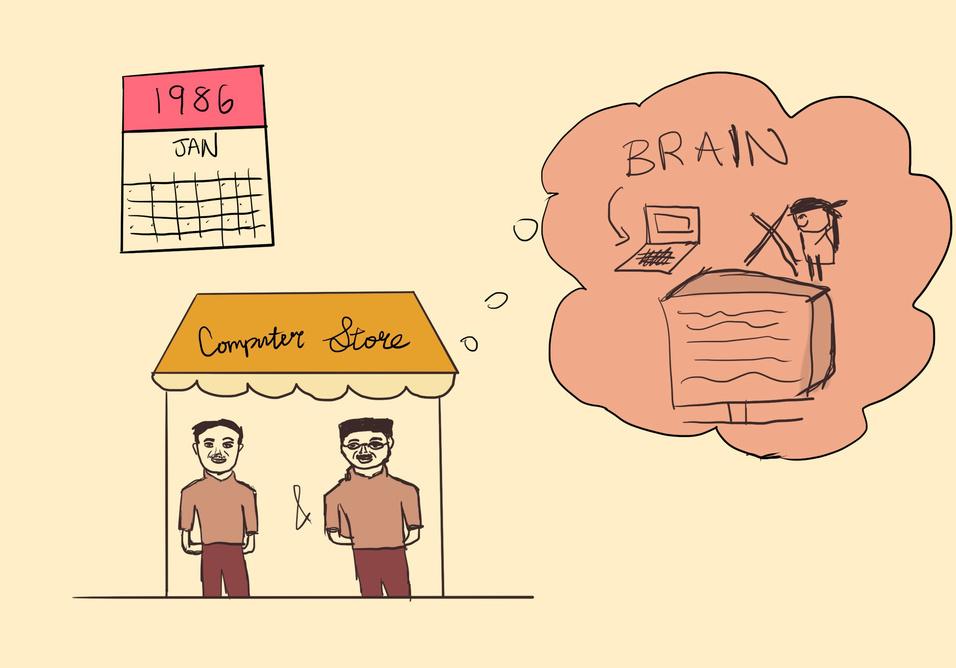
730 NIZAB BLOCK ALLAMA IQBAL TOWN
LAHORE-PAKISTAN
PHONE :430791,443248,280530.
Beware of this VIRUS Contact us for vaccination $#@%$@!!
Another slightly modified message that could pop up was: Welcome to the Dungeon
(c) 1986 Brain & Amjads (pvt) Ltd.
VIRUS SHOE RECORD v9.0
Dedicated to the dynamic memories of millions of virus who are no longer with us todayThanks GOODNESS!!
BEWARE OF THE er VIRUS
:This program is catching program follows after these messages $#@%$@!!

In both messages, the receiver would be directed to contact the brothers, and the location provided was later verified to be their store. Although the message looks threatening, the virus itself is relatively harmless. In some cases, the virus would go completely undetected. This led to the Brain virus becoming the first stealth virus, or a virus that can blend in and evade system debugging programs This ability was partially a result of Brain’s non-destructive nature Aside from the message, the only notable change the virus would make to the infected device was that it would make seven kilobytes of memory unavailable, make the floppy disk drive slightly slower, and change the disk label into © Brain or © ashar The other factor
was Brain’s ability to mask its presence by showing a copy of the original boot sector instead of the virus whenever a debugging attempt was made.
The brothers Basit and Amajad would go on to tell Time magazine that they had simply made the virus to find a few pirates, and never expected to be receiving over 100,000 calls from all over the world Originating in Pakistan, the brothers would find themselves taking calls all the way from the United States, the United Kingdom, Australia, and even Hong Kong. Although the original virus was not made with the intention of being malicious or harmful, copycat viruses would soon pop up using Brain’s same detection evasion methods, but this time, for the worse

Editors: Yanxi Chen and Hwi-On Lee

Artist: Kevin Li
“The chess-board is the world, the pieces are the phenomena of the universe, the rules of the game are what we call the laws of Nature. The player on the other side is hidden from us.” game are what we call the laws of Nature The player on the other side is hidden from us ”
“The chess-board is the world, the pieces are the phenomena of the universe, the rules of the
 Thomas Huxley Thomas Huxley
Thomas Huxley Thomas Huxley
Have you ever heard of a man named Bobby Fischer? He was a terrific chess player who went mad from playing the board game he loved Chess is a game unlike no other: each move you and your opponent make must be calculated and executed precisely. Matches can be as short as mere seconds to as long as several hours, but how can it be that a board game with 64 squares has the power to turn someone mad? Well, it might come as a surprise but the game does have some psychological effects on players
First, one must understand the rules of this thousand-year-old game: Two
opponents on either side of the board compete against one another to trap the opponent’s king–a checkmate To complete such a simple but frustrating task, one must use the abilities of their respective chess pieces with great accuracy and cleverness. Pawns can only move up, bishops move diagonally, rooks move vertically and horizontally, queens can move vertically, horizontally, and diagonally, and knights move in an L-shaped manner The king moves one space to squares where he is not at risk of getting captured With this newfound knowledge, we can now advance to chess and its portrayal in the modern era.
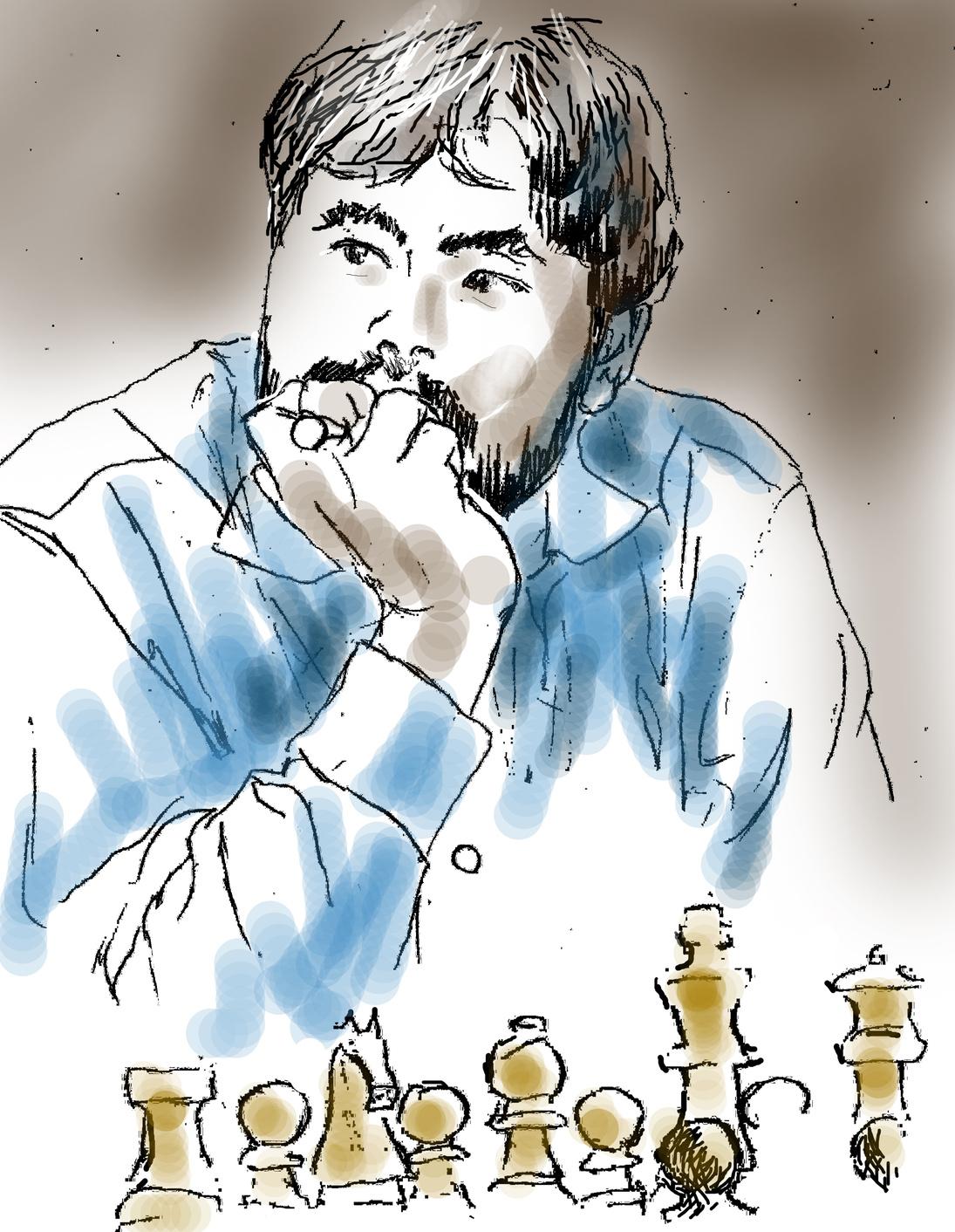
If you are a media consumer, you may have heard of a platform called Twitch before Twitch is a platform where people can stream many games live, and in light of recent years, chess has gained quite a following on the platform. Streamers such as the notorious Hikaru Nakamura and Anna Cramling have used their platforms on Twitch to spark the curiosity of their viewers to play the game of chess A New York Times article in September 2020 discusses how many people have turned to Twitch and other game streaming platforms to find entertainment since the
pandemic. As a result, streamers like Hikaru Nakumura saw a spike in viewers The article then stated that Twitch viewers had watched roughly 41 million hours worth of chess But the introduction of chess streaming is just the tip of the iceberg for the revival of chess in the 21st century, so let’s turn to Netflix.
In the popular TV streaming app, a show named Queen’s Gambit was released in 2020. Said to be inspired by famous chess players like Bobby Fischer and Nona Gaprindashvili, the show is about an orphan named Beth Harmon who became a chess prodigy, and as she continues to climb up the ranks in the chess world, she battles with many emotions and issues. The stunning cinematic scenes featured in the show captivated audiences into playing the game of chess. According to an article by CNN, just after three weeks of its release on Netflix, the audience caused an 87% increase in the sales of chess sets and a remarkable 603% jump in chess books sales Through the increase in streaming views, popular chess sites such as Chess.com and Lichess saw millions of new members in recent years. These sites have been crucial to the rise of new chess players as chess was previously only a game for the rich–pieces were expensive, and most people had no clue where to get them But in this age of technology and the internet, people can now experience the game of chess from the palm of their hand, breaking the inequality in the chess world

Now let us dive into a psychological analysis of the game of chess and how researchers are poking chess masters’ brains in order to understand the complexity of the game In the journal article “The Psychology of Chess and of Learning to Play It,” the author notes how chess players are driven to win each game, which results in the lengthy amount of time they take when calculating the outcomes of every move. When I say calculating in this case, it is a process in which a chess player tries to find the best outcome of every move and predict their opponent’s move following theirs This “ability to plan ahead” is influenced by previous matches the chess player may have had and used prior knowledge to make a wise decision. This often led to long hours spent outside of the game on analyzing an opponent’s plays and planning countermoves, which overtime, can burden a players mental health if they do not learn to take care of themselves
Although it is evident that chess players have adopted some remarkable talents, such as planning, is it true that playing chess will result in a higher IQ? In an article by Conversation, the Institute of Education tested the validity of this idea, but their results were quite surprising. The experiment showed that playing chess will not necessarily make you smarter. Although the results of this experiment are disputed, one mustn’t play chess to become smart, but rather for entertainment or out of curiosity
The renowned Nobel laureate physicist Richard Feynman once said, “discovering the laws of physics is like trying to learn the laws of chess merely by observing chess games ” Chess is a lot like classical mechanics, in which you use your pieces and human thought to predict the outcome of an event. Still, sometimes in both chess and physics, the future cannot be calculated and can only be seen when time passes. Thomas Henry Huxley, an English Biologist, once said, “The chessboard is the world, the pieces are the phenomena of the universe, the rules of the game are what we call the laws of Nature, and the player on the other side is hidden from us”

Author: Jessica Zhang
Editors: Emily Chen and Ivan Feng
Artist: Daisy Zheng
During your senior high school curriculum, your biology teacher may have mentioned that while organelles typically have either one or no membrane, mitochondria and chloroplast are the only organelles with double-membrane structures Many theories have been proposed to explain their particular properties, and among those, Endosymbiosis is the most commonly accepted theory.

Endosymbiosis assumes that eukaryotes (cells having a nuclear envelope, mitochondria, endoplasmic reticulum, and other internal structures that prokaryotes lack) evolved from their prokaryotic ancestors by engulng small, once-free-living prokaryotes
Throughout the engulng process of phagocytosis, the cell membrane of endosymbiotic host cells folds inward and forms vesicles that surround the prokaryotes The vesicles, along with the single membrane of prokaryotes combine to create a double-membrane structure Rather than being digested or killed off by the host cell, the inner cells would eventually survive and develop a mutually benecial relationship with the host. Within said relationship, the endosymbionts (the inner cells) will generate energy for the host cell and in turn, the host would provide raw materials for energy synthesis as well as a comfortable and safe environment for the endosymbionts Over time, the host and the endosymbionts
would evolve together for millions of years and become a single, inseparable organism
Although discussions among biologists concerning the origins of mitochondria and chloroplast have been going on for a long time, Lynn Margulis is considered to be the rst to introduce the symbiotic hypotheses to a signicant extent and depth. In her paper published in 1967, On the Origin of Mitosing Cells, she proposed that “the mitochondria, the (9+2) basal bodies of the agella, and the photosynthetic plastids can all be considered to have derived from free-living cells, and the eukaryotic cell is the result of the evolution of ancient symbioses ” The publication was rejected by dozens of academic periodicals and was even considered radical by other scholars at rst. However, skepticism surrounding the Endosymbiotic Theory was later on eliminated as the revolution of molecular sequencing gradually gained enough evidence to back up its legitimacy
Firstly, the rRNA sequences of mitochondria and plastids are more similar to those of bacteria specically, each to

different bacteria than those of eukaryotic cells This suggests that mitochondria and plastids did not originate from eukaryotes Secondly, these organelles are autonomous, having their own circular DNA molecules that can be transcribed and translated into their own proteins. They can even replicate through a splitting process similar to that of certain bacteria. Finally, their double-membrane structure suggests that they were once separate from their host cell, and have been integrated into the host as opposed to having been developed naturally
The staggering amount of evidence in favor of the Endosymbiotic Theory now validates its once rejected status and is more so accepted as a fact within biology. The theory changed biologists’ understanding of the biosphere forever, indicating the symbiotic interaction between eukaryotes and prokaryotes However, we may never be completely certain, as there is always new evidence surfacing, leading to new discoveries We should always keep up with the progress of academic development, and continue to enjoy the view from different perspectives.
Editors: He-Hanson Xuan and Max Ye
Artist: Serena Yung
individual, unique shapes of the receptors are how the neurons can differentiate between the 60+ types of neurotransmitters

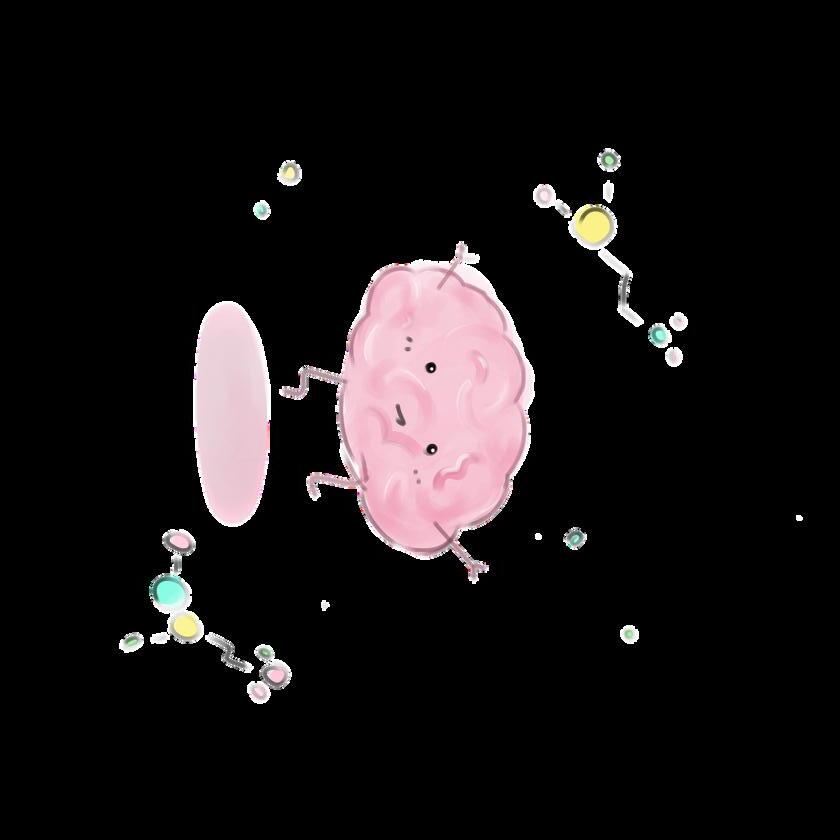
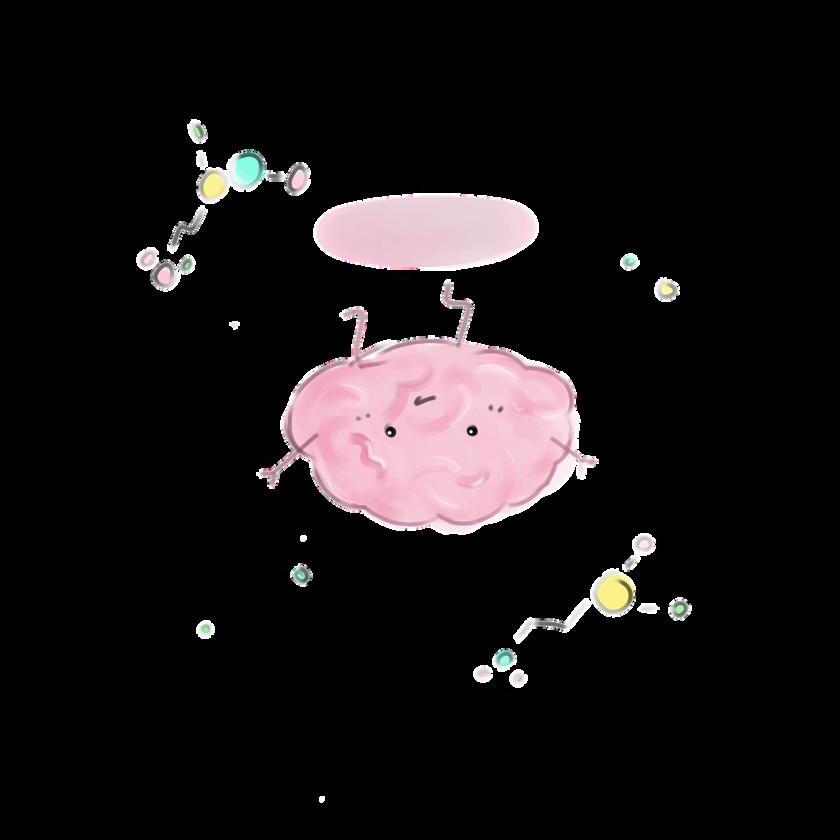
Every day, you feel a plethora of emotions and physical reactions due to various stimuli, but how does your brain interpret those stimuli and translate them into responses? Neurotransmitters. Your body produces these chemical messengers to communicate with itself. These molecules are endogenous, synthesized by your neurons After being created immediately, neurotransmitters are used for communication between neurons or specialized sensory or muscle cells The process of sending a signal requires the neurotransmitters to travel through a miniature gap between neurons known as the synapse. An activated neuron cell releases neurotransmitters from synaptic vesicles intracellular “pockets” made of the same phospholipid material as the cell membrane Although some neurons release only one type of neurotransmitter, others can deliver multiple neurotransmitters Receptors then receive these molecules on the neuron on the other side of the synapse. The receptors are shaped to specifically bind to a single neurotransmitter. The
One commonly known neurotransmitter is serotonin It is produced almost exclusively in the raphe nuclei in the brainstem's midline Low serotonin can lead to depression and anxiety, while high amounts can cause osteoporosis (weak bones) and a slew of unpleasant symptoms. Such high levels can be classified as serotonin syndrome. It has symptoms that vary in severity: mild symptoms including shivering, heavy sweating, and twitching muscles, and severe symptoms including unconsciousness, seizures, and irregular heartbeat. People who take excess amounts of serotonin or illicit drugs that increase serotonin levels are more at risk for serotonin syndrome. However, serotonin can be a very useful substance when appropriately used SSRIs, or selective serotonin reuptake inhibitors, block the reuptake of serotonin into neurons, so there is more serotonin available for signaling in the synapse, causing neurons with serotonin receptors to remain active for longer periods of time during signaling. Since psychological disorders such as

depression and anxiety manifest as decreased serotonin levels in the brain, SSRIs are highly effective in treating such ailments. Similarly, SNRIs, or serotonin and norepinephrine reuptake inhibitors, work the same way, also blocking the reuptake of norepinephrine another mood-regulating neurotransmitter, producing more effective antidepressants than SSRIs


In health class, you may have heard how dopamine, “the pleasure neurotransmitter,” is released as an effect of taking certain drugs, thus being directly involved in addiction. Generally, it is released in anticipation or as a reward for desirable behavior, whether that be food, drugs, or sex That is not the only function of dopamine, though Dopamine is integral to motivation, decision-making, attention, memory, learning, and muscle movement. High dopamine levels can cause increased

competitiveness, aggression, and poor impulse control, symptoms commonly observed in disorders such as ADHD. On the other hand, low levels of dopamine are associated with deterioration of higher mental functions and muscle stiffness, such as what happens during Parkinson’s disease Someone with this condition suffers from degeneration of their dopamine-releasing neurons, decreasing their endogenous levels of dopamine.

Overall, neurotransmitters are essential to our daily functioning. Not only do they affect your mental and emotional state, but they also contribute to your physical well-being This overview barely scratches the surface of the immense amount of information pertaining to neurotransmitters Neuroscience is a complicated and constantly-developing field of study. There are still endless topics to discover.

Umami Perhaps you have heard of it from a cooking show, your science class, or even a particular anime series The concept was first introduced in 1908 by Dr. Kikunae Ikeda and has since revolutionized the culinary industry, but umani is not as popular as you might imagine.

Recognized as the taste of monosodium glutamate (MSG), umami is one of the five core tastes, including sweet, sour, bitter, and salty The word for umami
In Japanese is 旨 味 , which loosely translates to “the essence of deliciousness ” The taste is characterized as the meaty, savory deliciousness that intensifies flavors. Essentially, umami is the taste of glutamate, an amino acid that naturally occurs in the human body and most foods we eat. Glutamic acid is sour with some umami taste to it, but pure savoriness is only achieved after neutralization, resulting in MSG
You may still wonder how umami tastes. It can spread across the tongue, stimulating the throat, root, and back of the mouth. The flavor is balanced and complex, creating a satisfying feeling in the mouth It lasts longer than other flavors, which helps deliver a mouthwatering sensation

Foods naturally rich in amino acids–such as cheese, tomato, asparagus, mushroom, fish and other seafood, and meat–have the most umami flavor. Umami is also attainable by adding flavor-boosting ingredients such as ketchup, miso, soy sauce, and/or fish sauce Other ways of incorporating umami include smoking, fermenting, or dehydrating the food, as they help build glutamate compounds over a long time
Not only is it delicious, but umami also has some health benefits. Compared to table salt (sodium chloride), one of the leading causes of cardiovascular diseases, MSG only has two-thirds of the sodium in it. Therefore, umami-filled ingredients are usually considered a healthier alternative
to salt-filled ones. For example, soy sauce has nearly six times less sodium per 100 g than salt while also contributing a satisfying boost of flavor and complexity. Despite being discovered relatively late, umami has existed throughout history as a significant contributor to flavor in almost all food The study of its impacts on human health is still going on to this day, but one thing is certain: a little bit of umami can make any savory dish tasty and filling.
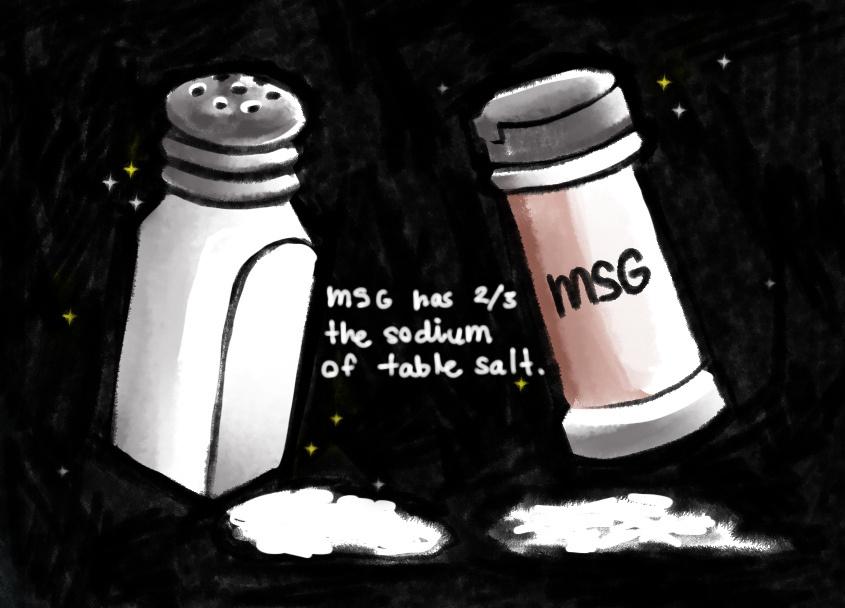
Antimicrobial resistance is the resistance of drugs that treat infections caused by microbes like parasites, viruses, bacteria, and fungi Antibioti i t refers to the resistance of treat bacterial infections. Res treating infection less effec lead to higher mortality. Ac CDC, more than 35,000 pe antibiotic resistance a year I WHO estimates that 10 milli die each year from drug-res by 2050, possibly leading crisis similar to that of 2 2020, the WHO name antimicrobial resistance one health challenges of the upcoming decade.


Antibiotic resistance is natural, but due to misuse and overuse, it is causing resistance to occur at a faster pace Alth h i di id l f tibi ti








and to healthcare facilities where they can

To combat the overuse of antibiotics in livestock production for both animal health and growth, the WHO recommends not using antibiotics in healthy animals and veterinary supervision when used. In addition, to prevent infections, they propose improving biosecurity on farms, animal welfare, and safe practices of production and processing of livestock However, all of this is easier said than done The WHO’s recommendations require the cooperation of governments and farmers from across the world who may rely on the present use of antibiotics to sustain profit.
Globally, it’s easy to believe that antibiotic resistance is out of our control, but



there are practices and actions we can take to control the spread of antibiotic resistance For example, individuals can carefully use antibiotics as recommended by healthcare professionals, regularly wash their hands, vaccinate, and hygienically prepare food. Furthermore, raising awareness on the problems antibiotic resistance poses is necessary to inspire policy and change on a larger scale Antibiotic resistance is a growing issue affecting agriculture, the economy, and community health It exhibits how health issues can be heavily related to factors aside from individual health. Professionals of different expertise and support and awareness from communities can help tackle antibiotic resistance.


Author: Nikki Jiang
Editors: Shirley Chen and Ivan Feng
Artist: Tiffany Chen
Modern medicine would not be what it is today without anesthesia. It prevents patients from feeling pain during surgery, making it an extremely important medical milestone Anesthesia is a temporary and controlled loss of sensation and is administered in one of three ways: local, regional, or general Today, nitrous oxide (laughing gas) and morphine are commonly used anesthetics. Before these modern discoveries, surgeries were performed as a last resort, and the patient remained conscious throughout the entire procedure, a trauma-inducing experience for both the patient and the doctor
In Fanny Burney's vivid recollection of her operation, she states, “When the dreadful steel was plunged into the breast I needed no injunctions not to restrain my cries. I began a scream that lasted unintermittently during the whole time of the incision … so excruciating was the agony … I then felt the Knife [rack]ling against the breast bone – scraping it”. Records of these surgeries were rare because the patients that survived rarely reflected on the experience to avoid resurfacing the traumatizing memories that they had suppressed
Early anesthesia can be traced back to the Babylonians, Greeks, Incas, and Chinese. Opium from poppy seeds and mandrake plants soaked into sponges were used in surgeries for pain relief. In Asia, Indian hemp was commonly used. During medieval times, alcohol was orally given during surgery Before modern anesthesia, soldiers in battle had no choice but to bite down on a bullet to distract from the pain Doctors could not provide more than herbs and alcohol to ease patients’ pain until the
mid-1800s with the discovery of sulfuric ether
In the early 1800s, alcohol was combined with other substances to create a more potent anesthetic In 1831, whiskey was combined with chlorinated lime to make an early form of chloroform. Scottish physician Sir James Young Simpson was the first to use chloroform on his patients. Patients experienced the narcotic effects of chloroform within a short time by inhaling it through a handkerchief soaked in the solution, numbing their pain The use of chloroform was extremely dangerous and proved fatal with the wrong dose However, the skill of physicians improved as chloroform was studied further, and its use soon became widespread. It was used on the battlefields during the MexicanAmerican War, Civil War, and Crimean War. Most famously, Queen Victoria was sedated with chloroform during the birth of her eighth child
Chloroform and other ancient methods of anesthesia are no longer in use today However, they paved the way for our modern anesthesia to ensure a safe and pain-free process during surgery.

Polio, one of the most fatal viruses in the early 20th century, has been rediscovered in the wastewaters of New York from June to July of 2022 Now that it has made its return, where does New York go from here?
Author: Wendy RongEditors: Shirley Chen and Hwi-On Lee
Artist: Jenny Luo
New York State governor Kathy Hochul has declared a state of emergency shortly following the discovery of polio samples in wastewater during June to July of 2022. Authorities have been urging the masses to vaccinate in an attempt to ameliorate the outbreak; since then, more than 28,000 vaccines have been administered to the public.
Polio, otherwise known as poliomyelitis, is a highly contagious disease with the ability to infect a person’s central nervous system which, in the worst case, can inflict permanent damage to a person's nerves, causing paralysis. The virus is spread from person to person through contaminated food, water, and contact with feces. Polio proved to be one of the most fatal epidemics plaguing
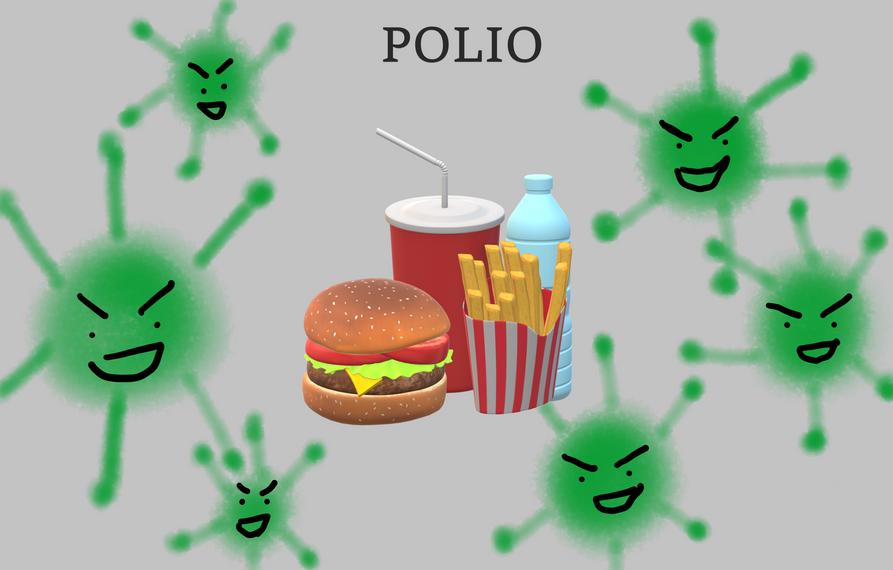
industrialized countries in the early 20th century Similarly to the Covid-19 outbreak, the general public responded by avoiding large public gatherings and contact with strangers; however, the widespread introduction of vaccines during the 1950s and 60s brought polio outbreaks under control. Rotary International and the Global Polio Eradication Initiative (GPEI) launched efforts to immunize the world’s children against polio during the 80s, leading to a 99 9% reduction of global polio cases Since 1988, more than 2 5 billion children have been vaccinated, and as a result, in 2020, only two countries have reported cases of wild polio circulating.
However, despite efforts to eradicate it, wild strains of polio have been reappearing in developed countries. From January to June 2022, there have been reports of polio appearing in sewage samples in the U S , United Kingdom, Israel, and Northern Ireland In late July, an unvaccinated individual in New York City was reported to have contracted the virus, the first case of poliomyelitis reported in the U.S. since 2013. As a result, the Central Disease Center (CDC) and World Health Organization (WHO) have been working closely to analyze the
epidemiological situation to determine a potential response to the virus spreading to various other countries. The U.S. and U.K. have also implemented surveillance on the poliovirus, strongly urging the general public to vaccinate
Health officials currently advise the best course of action to be immediate vaccination On September 9th, 2022, Governor Hochul issued an Executive Order declaring the polio outbreak to be a State Disaster Emergency, and increased the availability of resources to protect New Yorkers from getting infected. State Health Commissioner Dr Mary T Bassett also added, “If you or your child are unvaccinated or not up to date with vaccinations, the risk of paralytic disease is real I urge New Yorkers to not accept any risk at all. Polio immunization is safe and effective–protecting nearly all people against disease who receive the recommended doses. Do not wait to vaccinate. If you are unsure of you or your families' vaccination status, contact a healthcare provider, clinic, or local county health department to confirm you and your
loved ones receive all recommended doses.”
Currently, the individuals most at risk in New York are unvaccinated civilians in the Rockland, Orange, Sullivan, and Nassau counties These areas, known for their low vaccination rates as little as 37% do not have the herd immunity that large vaccinated populations have Widespread misinformation has led people around the country to reject vaccination, believing that the severity of real or perceived side effects caused by vaccinations outweigh the actual diseases. The World Health Organization also reports childhood vaccination rates have declined globally within the last three years Experts attribute this reduction to decreased access to scheduled vaccination and pediatric appointments. Specifically in the U.S., a growing distrust of public health and government agencies has also been a contributing factor.
Nevertheless, in spite of concerns of anti-vaccination sentiment, hopes remain high in combating polio; if the world can do it once, it can unite to fight against the virus again

Anthrax is a threatening disease that can be contracted through a variety of ways such as inhalation. In this article, the questions of what exactly Anthrax is, how it can be contracted, and what it means to be infected are answered

A rare but dangerous disease, anthrax is a disease caused by the bacteria Bacillus Anthracis. Bacillus Anthracis is a large Gram-positive, rod-shaped, non-motile, and aerobic bacteria part of the genus bacillus. Anthrax can naturally be found in soil and on almost every continent. Anthrax spores can stay dormant for years or decades in the environment Anthrax, although rare, commonly affects wild or domesticated grazing animals Anthrax outbreaks are common in countries that don’t have programs that routinely vaccinate animals. Infections can occur when a person or animal comes in contact with spores, infected animals, or contaminated animal products. Anthrax, however, is not contagious (person-toperson contamination) When these spores get inside the body, these spores are activated and become anthrax bacteria (this happens when the environment is rich with water, sugars, or other nutrients) These bacteria then multiply and spread out in the body, producing toxins that can lead to death.
There are four types of anthrax infections; cutaneous anthrax, inhalation anthrax, gastrointestinal anthrax, and injection anthrax Cutaneous anthrax is the most common and least dangerous type of anthrax; this type of anthrax develops when anthrax spores get into the skin Infections for cutaneous anthrax usually develop 1-7 days after exposure.
Author: Daniel Zhou Editors: Shirley Chen and Eric Lin Artist: Shihan GaoThis form of anthrax affects the skin around infected areas and is most common on the head, neck, forearms, and hands. The symptoms include small blisters or bumps, swelling, and a painless skin sore (ulcer) with a black center (this appears after the small blisters or bumps) Without treatment, ~20% of people infected with this cutaneous anthrax die However, almost all patients treated with antibiotics taken by mouth for 7-10 days, with Doxycycline and ciprofloxacin used most often, will survive.
Another form of anthrax, considered the most dangerous form, is inhalation anthrax Infection for inhalation anthrax usually develops a week after exposure but can take up to two months Inhalation of anthrax can result from a person unintentionally breathing in anthrax
Inhalation anthrax consequently starts in the lymph nodes of the lungs, then spreads to the rest of the body causing severe breathing problems and shock. These breathing problems can be fever, chest discomfort, shortness of breath, confusion or dizziness, nausea, vomiting, stomach pains, headaches, extreme tiredness, and body aches Without treatment, inhalation of anthrax is nearly always fatal However, given IV(intravenously) antibiotics (antibiotics injected into the veins) about 55% of patients survive. In addition, there are antitoxin therapies for inhalation anthrax (raxibacumab and obiltoxaximab) that target the toxins caused by the infections. The third type of anthrax, a form rarely reported in the United States, is gastrointestinal anthrax Infections for gastrointestinal anthrax usually develop 17 days after exposure, similar to cutaneous anthrax. This form of anthrax usually develops when a person eats raw or uncooked meat from an animal infected with anthrax. Anthrax spores can affect the upper gastrointestinal tract (throat and

spores
esophagus), stomach, and intestines The spores in these areas can cause a wide variety of symptoms such as fever, ascites, septicemia, swelling of neck or neck glands, sore throat, painful swallowing, hoarseness, nausea and vomiting, especially bloody vomiting, diarrhea, headaches, flushing, red eyes, stomach pain, fainting, and swelling of the abdomen Without treatment, more than half the patients with this form of anthrax die However, given IV antibiotics, such as penicillin g, ~60% of patients survive. Finally, the last form of anthrax, one that has never been reported in the United States, is injection anthrax. Injection Anthrax has symptoms similar to cutaneous anthrax: fever and chills, a group of small blisters or bumps that may itch, a painless skin sore with a black center that appears after the blisters or bumps, and swelling around the sore and abscesses deep under the skin or in the muscle where the drug was injected. Injection anthrax can spread faster through the body and be harder to recognize or treat.
Editors: Eric Lin and He-Hanson Xuan
Artist: Jenny Luo
Cancer has declined in recent years due to the advance of medical technologies Nevertheless, there’s still a high percentage of people getting stomach cancer What are the causes and symptoms of stomach cancer?
Stomach cancer is a disease caused by the changes of the cells in the stomach. In the United States, stomach cancer is started by the gastroesophageal junction a long tube that carries food connecting to the stomach Some of its symptoms include:
Belly pain
Feeling bloated after eating
Feeling full after eating small amounts of food
Heartburn
Indigestion
Nausea
Vomiting
Feeling very tired
These symptoms will appear more often as it goes to a late stage To test the stages of stomach cancer, people can take a blood test, stomach ultrasound, imaging test, or do a surgery But what are the causes of stomach cancer?
Helicobacter pylori H pylori attacks the lining that protects people’s stomach Like all other cancers, common risk factors of stomach cancer include:
Consuming high sodium and/or smoky food
Lack of antioxidant intake
Smoking
Drinking alcohol Genetics
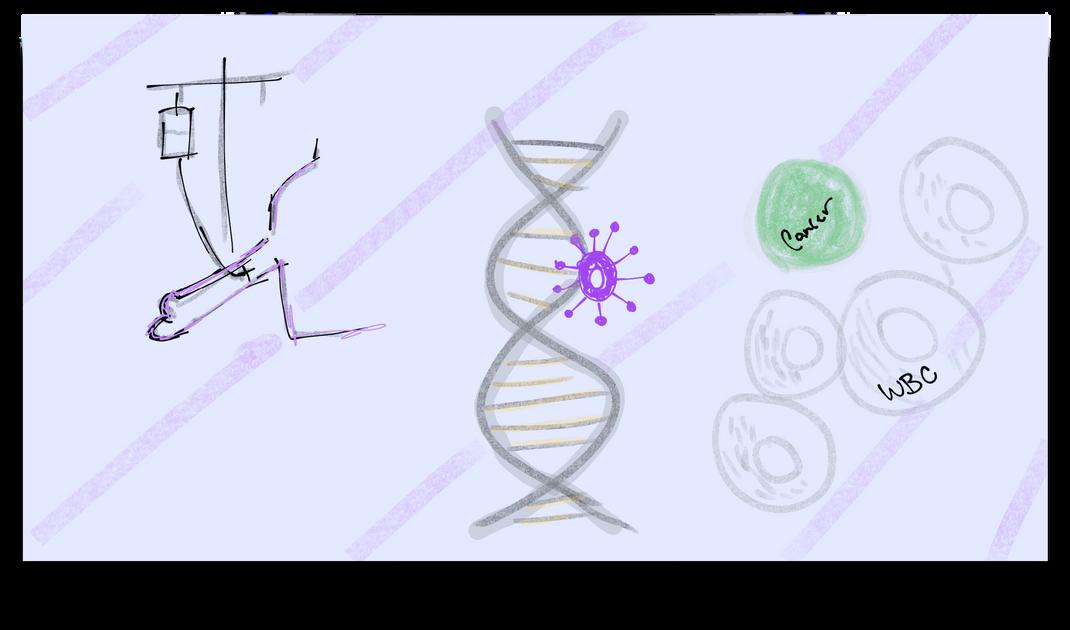
A person’s stomach will develop worse and sicker as a result of these factors. Additionally, stomach cancer tends to develop in elders of 65 years.
There are many ways of treating stomach cancer, most common, surgery. Surgery is available for all stages of stomach cancer, but it works more effectively at stage one as stomach cancer can be removed from the inner lining of the stomach For stage four, surgery only relieves the symptoms of stomach cancer. Surgeons will remove lymph nodes to look for cancer.
But most of the time, surgeons will remove small cancers from the stomach depending on the cancer in its body. There’s other types of treatments for stomach cancer:
Chemotherapy a drug treatment that uses chemical compositions to kill cancer cells It can travel through the whole body or only in the bell.
Radiation Therapy a treatment that uses high-powered beams of energy to kill cancer cells.
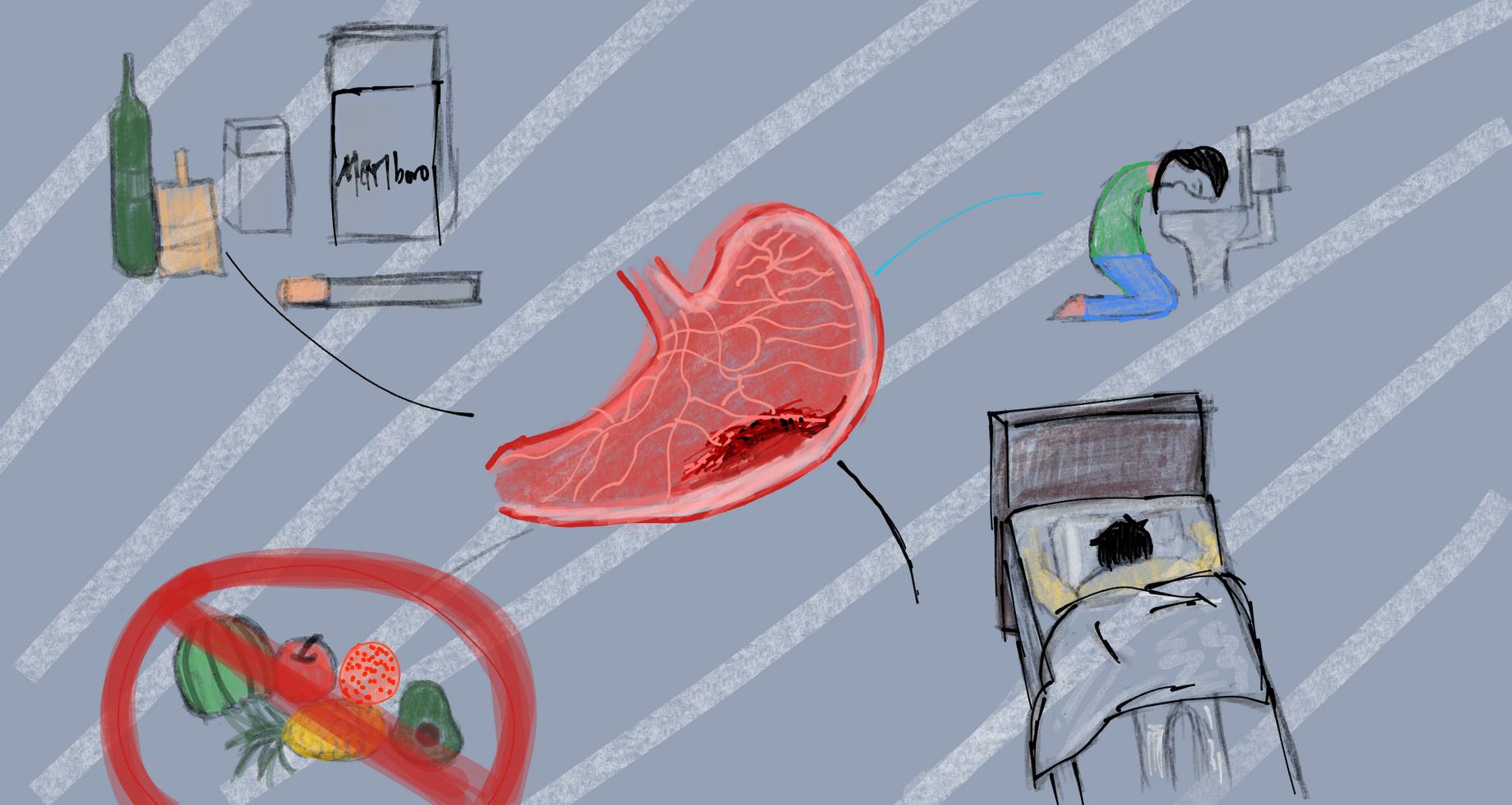
Targeted Therapy a treatment that uses medicines that attack specific chemicals that’s in the cancer cells By blocking the chemicals, targeted therapy can cause cancer cells to die Immunotherapy a treatment with medicine that helps your body's immune system to kill cancer cells.
Knowing the signs and causes of stomach cancer will be easier to recognize its importance and take action.
The risk of developing stomach cancer can be decreased by the following actions:
Eat a lot of fruits and vegetables.
Recommended daily
Reduce eating salty and smoked foods if possible
Stop smoking and drinking alcohol It’s better for the body.
Check with a family physician if the families have cancer before.
Exercise more to have a stronger body.
Knowing these measures will lead to a healthier lifestyle Furthermore, medical technology is always advancing to ensure a healthy life for all As a result, studying the causes and preventions of stomach cancer is beneficial because cancer is never a minor issue, and should be brought to light.
Scoliosis is a sideways curvature of the spine (appearing as an S or C shape) common in adolescents. Many high schools will host a large-scale screening to check for scoliosis. Doctors usually ask a student to bend forward from the waist, with arms hanging loosely If one side of the student’s shoulder blade is more prominent than the other, they may have scoliosis In this case, X-rays will further confirm the diagnosis and determine the degree of curvature.
Most cases of scoliosis are mild, but the curve can worsen in growing children, leading to unappealing visual symptoms such as uneven shoulders and humpbacks. It will also cause chronic back pain and breathing problems because the severe spinal curve reduces the amount of space within the chest As a result, doctors must be attentive and devise different treatments according to severity


For children with scoliosis curves less than 20 degrees, doctors will usually use the “watch and wait” approach observation with repeated examinations to detect further progression. They will also recommend the Schroth Method developed by Katharina Schroth. This method is a series of exercises customized for each patient to de-rotate, elongate and stabilize the spine With the aid of therapy balls, poles, and Schroth bars, patients practice breathing to gradually achieve muscular symmetry and rotate the spine to the right position. In addition, patients need to be aware of their posture in their daily lives, because posture may worsen scoliosis.
If the worsening spine is ignored and the scoliosis curves beyond 20 degrees, doctors may suggest braces Most braces are plastic and need to be worn between 13 and 16 hours a day Although the braces will not reverse the curve, they will apply pressures to the growing spine, preventing further worsening of scoliosis.
Surgery is recommended for patients with a curve of more than 50 degrees. There are three surgery options The first one is spinal fusion, where surgeons use metal rods, hooks, screws, or wires to hold the spine straight and still and place a bone-like material between the vertebrae. Then the old and new bone material will gradually fuse together. The second option is called expanding rod, which is typically used in patients whose illness is developing rapidly at a young age. In this case, surgeons will attach expandable rods along the spine The rods will adjust every 3 to 6 months in length, either with surgery or in the clinic using a remote control, as the patient grows Finally, Vertebral body
tethering could be performed through small incisions. A strong, flexible cord is threaded through the screws which are placed along the spinal curve. Then the spine will straighten when the cord is tightened.
Although surgeries can cure scoliosis permanently, they are extremely risky since performing large operations on the spine may cause numerous complications Therefore, we should prevent scoliosis from deteriorating by focusing on our daily actions. Examples include sitting straight, not crossing our legs, and not leaning on one side. These behaviors, though trivial, can make a huge difference.

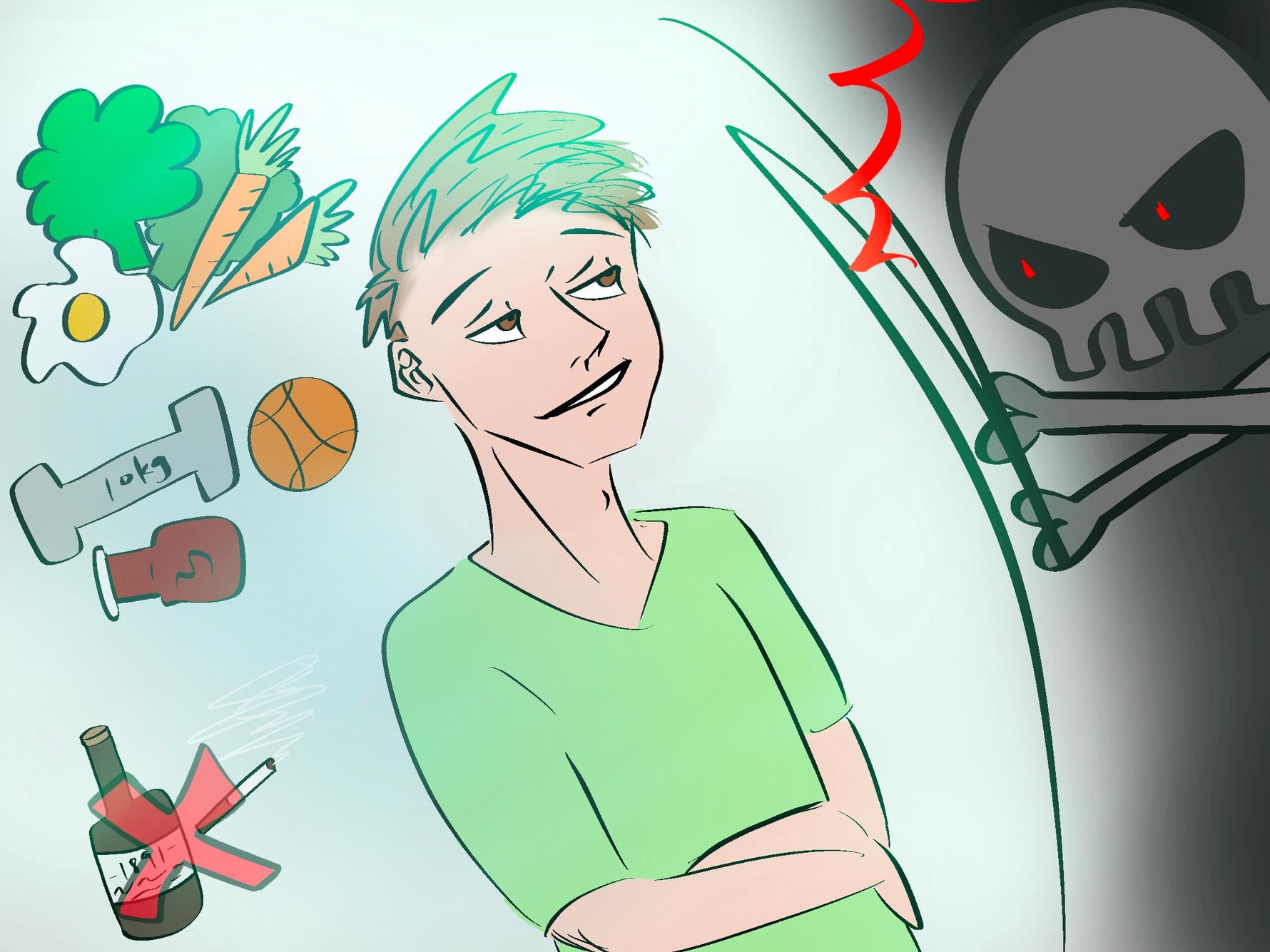

Author: Eric Jiang
Editor: Kira Tian and Peggy Yang
Artist: Nicole Tseng
Cardiovascular disease is a general term for conditions affecting the heart or blood vessels It's the leading cause for death globally every 36 seconds, a person dies of cardiovascular disease in the United States alone. Four of the main types of cardiovascular disease include coronary heart disease, strokes and TIAs (mini strokes), peripheral arterial disease, and
Aortic disease
Among them, ischaemic heart disease (also called coronary artery disease) and stroke are the top two leading causes of death globally.
Ischaemic heart disease is a heart problem caused by narrowed heart arteries. It is also the world’s biggest killer, responsible for 16% of the world’s total deaths Additionally, strokes and chronic
obstructive pulmonary disease are the second and third most common causes, responsible for approximately 11% and 6% of the world’s deaths Together, approximately 27% of deaths globally are caused by cardiovascular disease, and the amount of death from this disease is continuously rising.
Although there is no clear cause of cardiovascular disease, many things can increase the chance of getting the disease. High blood pressure, smoking, diabetes, inactivity, or obesity can all increase the risk of getting cardiovascular disease
However, as those conditions are very common among the population, it is not surprising that cardiovascular disease is

prevalent throughout the world and has become the leading cause of death.
The prevention of cardiovascular disease is extremely simple, yet most diffcult to complete: maintaining a healthy lifestyle Stop smoking, having a balanced diet, exercising regularly, maintaining a healthy weight, and cutting down on alcohol are all parts of a healthy lifestyle. These are all common solutions for not only cardiovascular disease, but also all other related health issues. If you ever feel like maintaining a healthy lifestyle is too tiresome, think about how many people might cardiovascular disease have killed just during the time you’re reading the article
 Author: Lucy Chen
Author: Lucy Chen
Editor: Eric Lin, He-Hanson Xuan
Artist: Jenny Luo
Emerging economies can only grow sustainably if they simultaneously manage the growing urgency of environmental degradation and climate change Failure to tackle these threats will heighten health and social inequalities, and push millions into extreme poverty, increasing the nation’s susceptibility to future debilitations.
In the next 20 years, it's anticipated that the amount of plastic entering oceans will almost triple, negatively impacting our ecosystems, health, and economies Additionally, the UN predicts that in order to keep up with the growing demand for food by 2050, agricultural production would need to increase by almost 50%. However, the food industry is currently
responsible for up to a third of greenhouse gas emissions, loss of 80% of biodiversity and that of 70% of freshwater resources It is impossible to overstate the necessity of remediative action Energy, industry, transportation, infrastructure, agriculture, forestry, and land use are just a few of the industries that must undergo profound change. Humans must also fundamentally rethink the way they generate, consume, and manage trash.
In order to assist the transformation of energy and industrial systems, increase energy efficiency, combat environmental pollution, and conserve and restore natural capital, governments must access a wide range of policy interventions and funding options.
The protection of natural ecosystems and the development of a sustainable food

system are two major areas of concentration for public investment in nature-based solutions and agriculture For an afforestation effort to absorb carbon, the Pakistani government has reserved between $800 million and $1 billion over the next four years.
Roadmaps can operate as a link between short-term action plans with quantifiable goals and long-term commitments. Governments can announce how they are pursuing environmental goals and outline the key stakeholders' responsibilities by increasing transparency Delivering a green action plan extends well beyond the pursuits of the departments of environment or energy and becomes a core component of policy in all areas of the government.
Climate change has caused many adverse changes to the environment around the globe, and a notable portion of those changes has affected the ocean in particular. One seemingly trivial issue is the gradual slowing of ocean currents around the globe In the face of more obvious problems like global warming and plastic pollution, how do slowing currents measure up?

First, here is some background information on how these currents work. A phenomenon known as thermohaline circulation drives the movement of global ocean currents. Although winds drive currents within the ocean’s upper 100 meters of water, they can’t reach the ocean currents thousands of meters below the surface
That’s where thermohaline circulation has its influence. The components of the word “thermohaline” “thermo” meaning temperature and “haline” meaning salinity indicate the two environmental conditions that cause this type of circulation As water near the polar regions cools and becomes sea ice, this increases the concentration of salt in the water, which in turn increases the density of that water. Denser water sinks to the ocean floor, pulling in surface water to replace it, which also becomes cold and salty enough to sink. This positive feedback loop is where the global conveyor belt starts, which occurs near Greenland. However, the strength of thermohaline circulation weakening by the rising temperatures caused by climate change
Global warming causes sea ice to melt, which decreases the salt concentration in the polar regions. Thus, the rate at which the water is sinking and creating currents is continually decreasing as global warming worsens According to current findings, the global conveyor belt is in danger of completely collapsing if these conditions continue What would the consequences of a complete stop be? Unfortunately, some effects of the weakening currents can already be identified. One signicant part of this global conveyor belt is the Atlantic Meridional Overturning Circulation (AMOC), or the portion owing within the Atlantic Ocean The surface part of the AMOC in the northwestern Atlantic is the Gulf Stream, which is essential for regulating the climate in the southeastern United States and Europe. The Gulf Stream’s warm waters cool Florida’s summers and warm its winters, in addition to bringing warmth to Europe. Since the global conveyor belt has been stalling,
a pileup of warm water is gathered at the beginning of the Gulf Stream, contributing to hotter temperatures in the southeastern United States and colder temperatures in Europe and parts of North America. This temperature shift can also disrupt climate conditions in these areas In other places around the globe, such as India, the slowing currents are also preventing adequate cooling, leading to sea level rises, increasing the probability of deadly heat waves, and possibly altering the monsoon cycle. Farmers in India and other parts of the world rely on the monsoon cycle’s periodic heavy rainfall. Without it, the agriculture industry in these areas could be negatively impacted
The slowing global conveyor belt threatens vulnerable populations, which includes people with health conditions and nancial insecurities. The importance of this global ocean circulation is another reason why we should put more effort into combating climate change and global warming.

Artist: Denise
SuarezGlobal warming is the most prominent environmental issue in the 21st century Although it is common knowledge that climate change can be mainly attributed to carbon emissions, it is less known that carbon release is propagated in a positive feedback loop; as temperatures increase, more carbon is released. This phenomenon is the cycle of soil warming.


Soil is one of the leading carbon sinks on Earth because a signicant portion of the Earth’s carbon is stored in the soil, the ocean, and forests Releasing even a small percentage of carbon from the soil will substantially impact the climate. Unfortunately, it is happening worldwide, and people are contributing to its exacerbation. The shrinking of carbon storage is caused by various factors, including the decrease of plant life or change in microbial activity, all of which are connected to human interactions and global warming
A recent research paper by the University of Exeter highlighted their
Newest findings on soil warming. After examining 9,300 different soil samples from across the globe, they reported that the amount of released carbon could be linked to the soil type For example, coarse-textured soils were found to lose three times as much carbon as ne-textured soils. This is due to their clay content. The clay content of soils is a strong indicator of a soil’s carbon stabilization capacity. Finer soils with more clay provide more mineral surface area for carbon-based organic material to bind to, which makes the soil denser and thus better at retaining carbon
Tracing these soils back to their origin locations, they linked them with the region’s temperature Fine-textured soils are mainly sourced from tropical areas, and coarse-textured soils mostly originate from
cooler areas far from the equator. This suggests that cooler areas are more susceptible to temperature increments and warrant more attention. It was also discovered that, for every 10°C increase in temperature, average carbon storage across all soils decreases by over 25%, the validity of which is further affirmed by Professor Hartley. This positive feedback loop is the perfect formula to accelerate global warming.
On a social level, this information is a powerful asset for evaluating models for Earth, specically in model improvement on representing soils and their effects on the global carbon cycle The data above additionally identied the areas most vulnerable to soil stock decline The study was also a wake-up call for the world that carbon storage is declining, emphasizing the dangers of climate warming. Further research will be conducted on quantifying the amount of carbon released concerning current soil degradation rates. These findings could more accurately simulate the future of climate change, giving us a better vision of what we need to change
Soil carbon sequestration is a process where carbon dioxide is removed from the

atmosphere and stored in the soil carbon pool, either naturally or through agricultural management It can potentially be a long-term solution to global warming as it benets both the environment and farmers However, with this newfound data, this method no longer holds the same promise. The results underscore an overestimation of soil’s potential to sequester carbon and emphasize the capability of vulnerable soil carbon stocks to exacerbate climate change in the future This does not signify soil sequestration is completely useless–we simply haven’t discovered a way for soil carbon storage to help us in the long run As researchers are looking into understanding more about this method, the most we can do to help is to slow down climate change by cutting fossil fuels and switching to renewable sources. Global warming keeps challenging society today and posing even more risks for our future Therefore, it depends on us to continue researching and implementing strategies for change and recovery




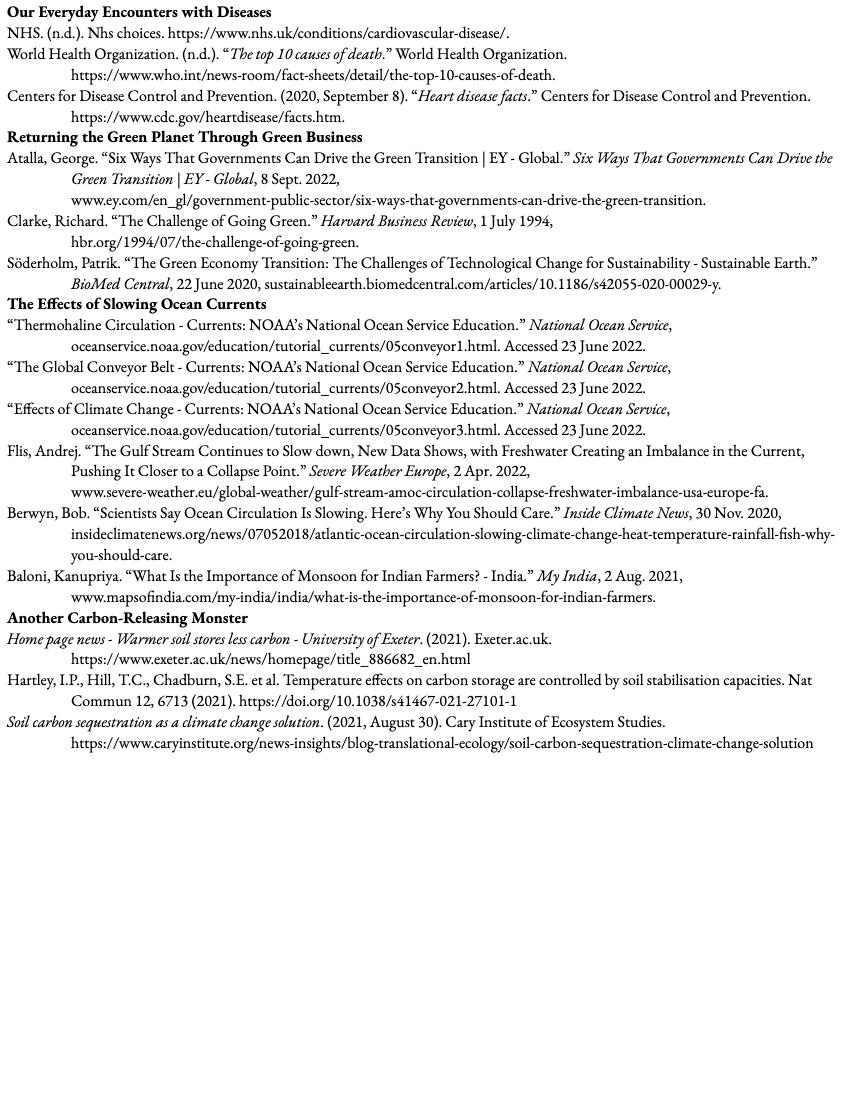
Whoarewelookingfor?
8th to 12th grade students who can commit for at least 2 hrs/week
English-speaking students globally
Interested in STEM
Whatarethebenefits?
Work in a student-led 501(c)3
nonprofit
Build your resume & gain volunteer hours and experience! Receive recommendation letters from your directors!
Ifinterested,pleaseviewourwebsiteformoreinformation!
Applicationisopenonourwebsitetoo~
Writersareinchargeofproducinganarticleorblogina2-week window.
Blogs:~250-500words
Articles:~500-750words
Editorsareinchargeofediting1-2articlesorblogsina1-week window.
Edit4piecesofwritingpermonthintotal.
Artistsareinchargeofdrawing3-4piecesofartforanarticleor blockina2-weekwindow.
SocialMediaMember:
create3-4socialmediacaptionseverymonthina2-week window
GraphicDesigners: designthepostsforthecaptionsina2-weekwindow
Helpfindguestspeakers&judges
(forwebinars,conference,magazinepartnerships,fundraisers,& review)
sendout5-8emailsperweek
HelpmaintainourWixwebsite
upload8-10articles/blogsina1-weekwindow
uploadeventrecordingsonthewebsite,YouTube&BiliBili
UpdatetheMembers'page&MemberoftheMonth
RegulatetheDiscordserver
ScienceHolicisdedicatedtoenhancingteens'knowledgeof differentSTEMfields.WestrivetointroducecomplicatedSTEM topicsinamannerthatisbothfunandcomprehensible.Wealso providevariousleadershipopportunitiesforstudentsaroundthe worldandachancetoearnvolunteerhours.
ContributionstoScienceHolic,a501(c)(3)organization,are tax-deductible.Sinceourorganizationrequirestheuseofvarious suppliesfordailyoperationandactivities,thisdonationpagehas beencreatedtoraisefundstoinvitetop-tierprofessionalsand professorsworkingintheSTEMfields:formattingourseasonal andspecial-themedmagazineeditionsand/orhelpingmaintain ourwebsiteandposts.100%ofthefundscollectedwillgo towardssupplyingourorganization.
Weareverygratefulforanypossiblecontributions no matter the amount—and would like to thank anyone who supportsourcauseandorganization.Tofindoutmoreabout whatwedo,pleasegotoourwebsite(www.scienceholic.org), contact us through our email (scienceholicmagazine@gmail.com), or dm us on Instagram account(@scienceholicmag).
Thankyouagainforyoursupportandfortakingthetimeto readourarticles,blogs,andweeklyupdates;thisallmeansthe worldtous!PleaseconsiderdonatingtoScienceHolicandhelp teensfromallaroundtheworldgainmoreexposuretoSTEM!
Cover Art bySerena Yung
